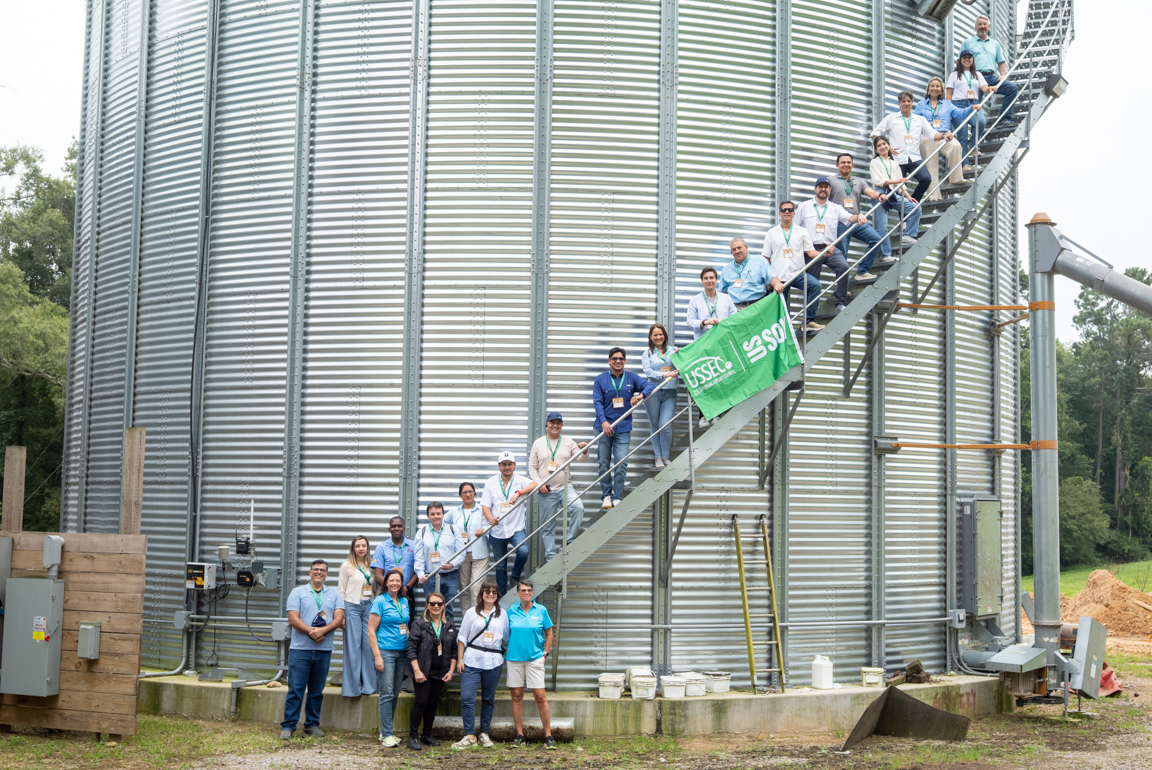Driving Demand From the Field to the Feed Trough

Driving across rural America, you are sure to notice a lot of hog barns dotting the landscape. There’s money to be had in those barns — for pork farmers, pork processors and the retailers who depend on them. But there’s another farmer whose economic interest is also in those barns — the U.S. soybean farmer.
Hogs consumed 18% of U.S. soybean meal — more than 276 million bushels — in 2021, and the benefits the ingredient adds to their diets do not go unnoticed by hog farmers or animal nutritionists.
“Soybean meal is a protein source in swine diets because of its consistency, its high-quality protein and its excellent amino acid profile. These all contribute to how important soybean meal is as a feed ingredient,” says Bob Goodband, Ph.D., professor and extension specialist at Kansas State University.
Goodband specializes in swine nutrition and management and recently completed a study, funded in part by the soy checkoff, that shows U.S. soybean meal provides more energy than nutritionists previously thought.
“For a long time, ruminant nutritionists have used net energy as their preferred system for correlating a feed ingredient’s nutrient value and growth performance,” says Goodband. “The swine industry has gradually begun to adopt the same technology to be more precise in regard to energy content of feed ingredients to more accurately formulate swine diets.”
Goodband’s research indicates soybean meal actually delivers between 105% and 125% of corn energy, which is significantly higher than what nutritionists thought. To discover this, Goodband and his team fed pigs diets with increasing amounts of soybean meal and looked at the change in feed efficiency, which is how much it takes for a hog to gain a pound.
As they increased soybean meal in the diet, the research team found improvements in feed efficiency, which convinced them that the energy content of soybean meal was vastly underestimated.
“Again, we’ve always thought of soybean meal as a protein and amino acid source, but our research showing a slightly higher energy content also has implications in terms of diet formulation that nutritionists and producers can take advantage of,” says Goodband.
With the proof in the numbers, Goodband expects nutritionists to evaluate soybean meal a little bit differently than they have in the past. That bodes well for soybean meal suppliers — more than 515,000 U.S. soybean farmers.
“My soybean acres and my hog barns are some of the most intertwined aspects of our farm,” says Reggie Strickland, a soy checkoff farmer-leader. Strickland grows soybeans — along with many other crops — and raises turkeys and hogs in North Carolina.
Animal agriculture is the no. 1 customer for U.S. soybean meal. The industry consumed nearly 10 billion bushels of soybeans over the last year.
“By investing in research like this through our soy checkoff, we’re boosting our own bottom line and the bottom lines of our neighbors,” says Strickland. “By investing in animal ag, our number one customer, we’re investing in ourselves.”



